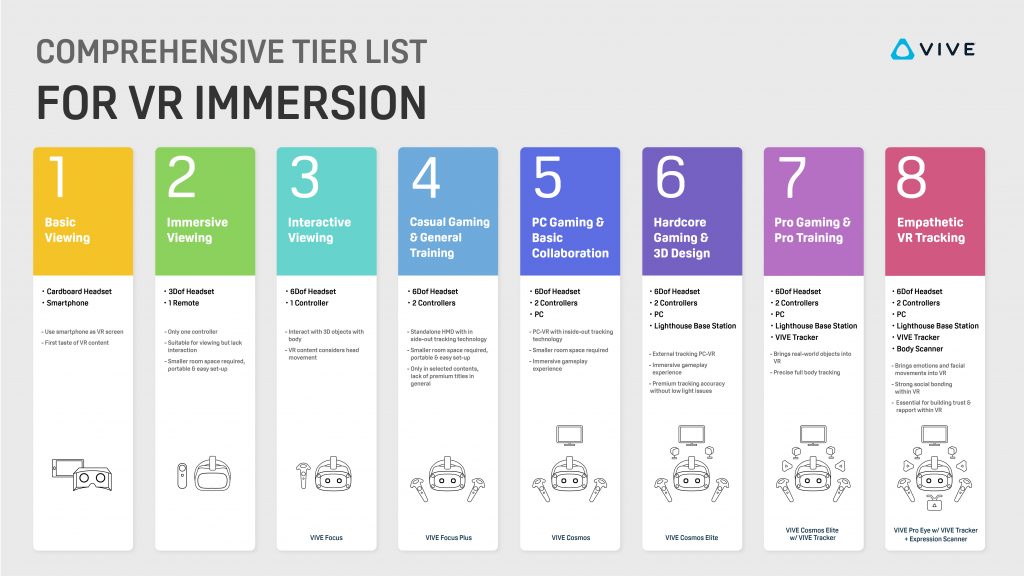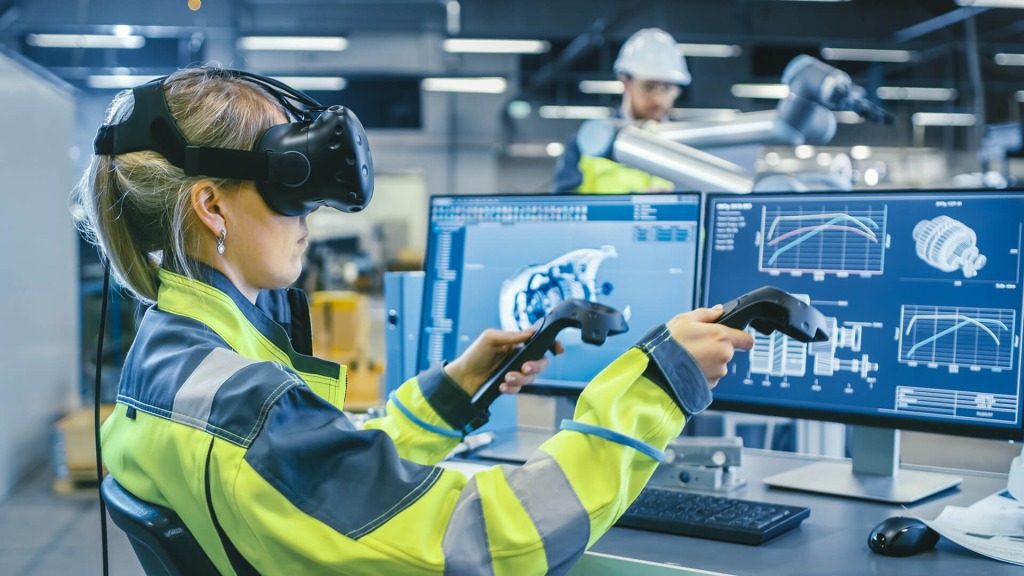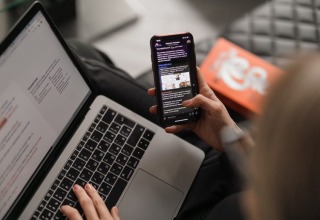Nowadays, virtual reality (VR) is moving beyond PC gaming to become part of businesses. Fortune predicts that by 2027, the AR and VR market will grow twenty-fold to $57.55 billion (source). In this article, we will explain what is driving this growth and what benefits VR can bring to your company.
How VR and AR technologies work
Usually, a person comes into contact with VR when playing computer games. How does it work in terms of technology?
In augmented reality (AR), a computer determines the position of a camera based on sensors and algorithms. This technology visualizes three-dimensional graphics by superimposing images on the real world.
VR works similarly, but the position of the user’s eyes is determined in a simulated environment. When a person turns their head, the graphics react accordingly, creating a compelling interactive world.
An important part of VR is a head-mounted display (HMD) because 80% of the information a person receives is through vision, says ScienceDirect. Therefore, developers are trying to improve the devices that create images. These are 3D glasses, VR helmets, and other gadgets.
The rest of the VR components are responsible for simulating sound, tactile and other sensations. So, MotionParallax3D allows you to explore the 3D world exhaustively as if it were real. The system captures the slightest movements of the user’s head and displays undistorted objects.
A multi-channel speaker system simulates the sounds of the real world for total immersion. VR gloves, suits, and chairs with sensors are responsible for tactile communication with the virtual world and help to control it.

VR types
At this stage of VR development, there are three types:
- Fully immersive VR.
A simulated environment is as close to the real world as possible and highly-detailed. This requires a high-performance computer and equipment to simulate a certain type of sensation.
- Non-immersive VR.
This technology involves simulations with images, sound, and controllers that are broadcast on a widescreen. Such systems have a stronger impact on the viewer than conventional multimedia, but only partially fulfill the VR requirements.
- Collaborative VR.
This type of VR includes games (Second Life, Minecraft, and others). They do not completely immerse you in the virtual world, but they have a well-built interaction with other players who gather in a virtual office and communicate with each other without complete immersion.
Let’s take a look at the areas in which VR technologies are used and what benefits they give to businesses.

VR in sales
In a business, VR is used to create virtual product mockups and conduct online presentations. Digital mockups are used to sell any product to attract more potential buyers.
For example, Italian furniture brand Natuzzi uses AR and VR to showcase its products. A buyer visits a showroom, enters a digital version of a house, and furnishes it with Natuzzi products. The program allows you to combine different furniture, change colors and patterns, and so on.
According to the creative director of the company, this technology gives buyers a sense of place and mood and forms an emotional connection with their choice. Natuzzi predicts that the virtual showroom will reduce brand closing rates by a third.
VR is also used for real estate sales: with its help, real estate agencies create virtual models of houses. This is how companies sell projects before the completion of construction because the interior and exterior of a house or apartment can be presented in a virtual version.
VR in construction
VR technologies improve construction design work and allow you to create detailed models of buildings. In the past, creating 3D models was time-consuming. Moreover, they were inaccurate, lacking in detail, and difficult to change.
3D modeling programs have solved these problems by providing a convenient solution for creating construction projects. Specialists immerse themselves in a simulated environment as if they were at the construction site. Even if team members work from different countries, they can participate in the project in real time.
With the help of a digital model, the team checks that all construction components fit together before ordering their production. This way they avoid unnecessary expenses and make a more accurate schedule of work. Clients use a VR program to select materials and the layout of a building and see how this affects the cost of the project.
An example of the use of VR technologies is the construction of the innovative Nova Hospital. Medical workers joined the project and helped to visualize the structure of the building and plan out the wards and rooms with equipment. For this, the team members used 3D glasses. It is expected that the operation of such a hospital will cost 10% less than that of existing ones.
VR in manufacturing
In manufacturing, VR is used at all stages of product creation. A virtual model of a product is presented to customers even before the start of manufacturing. This digital version is convenient to present at exhibitions and points of sale. It is convenient to train employees of enterprises with the help of VR programs.
Virtual prototyping reduces the development time by 15-30% and reduces the number of errors in production. Product quality is improving because the VR model allows you to carefully work out ergonomics, repair, and operational characteristics.
For example, Ford designs cars using VR. The Cologne Design Center operates a studio where engineers create models and evaluate them without a physical prototype. Visualization helps them to quickly design cars and work out design elements more carefully. In the same way, engineers have determined the optimal location of the dashboard, seats, and control mechanism for the new Ford Fiesta.
To build the F35 Lighting II fighter, Lockheed Martin Corporation set up a virtual prototyping center. VR technologies have made it possible to minimize errors in the design of the product whose cost of adjusting increases tenfold in the first five years.

VR in education
Businesses see VR as a tool for corporate learning.
American retailer Walmart has developed VR simulators for new sellers. 3D glasses immerse them in realistic scenarios that take place in real stores on ordinary days and during sales periods.
With the help of VR technologies, beginners solve different problems. For example, a store has experienced a data breach. Experts determine the problem and offer solutions. The incident simulation aims to prepare employees to deal with critical situations in a fun and risk-free manner and improve customer service.
Conclusion
VR technology improves processes and solves business problems in many areas, increasing the productivity and profitability of companies. To achieve this, contact Andersen who will help you to implement efficient VR solutions.
Last Updated: May 16, 2022




















